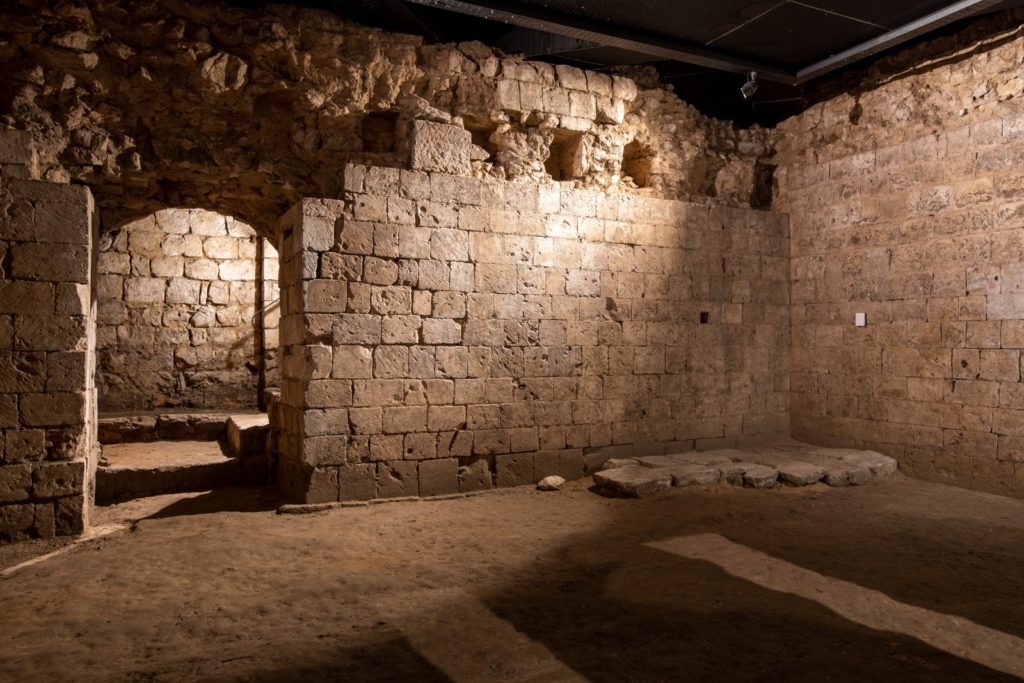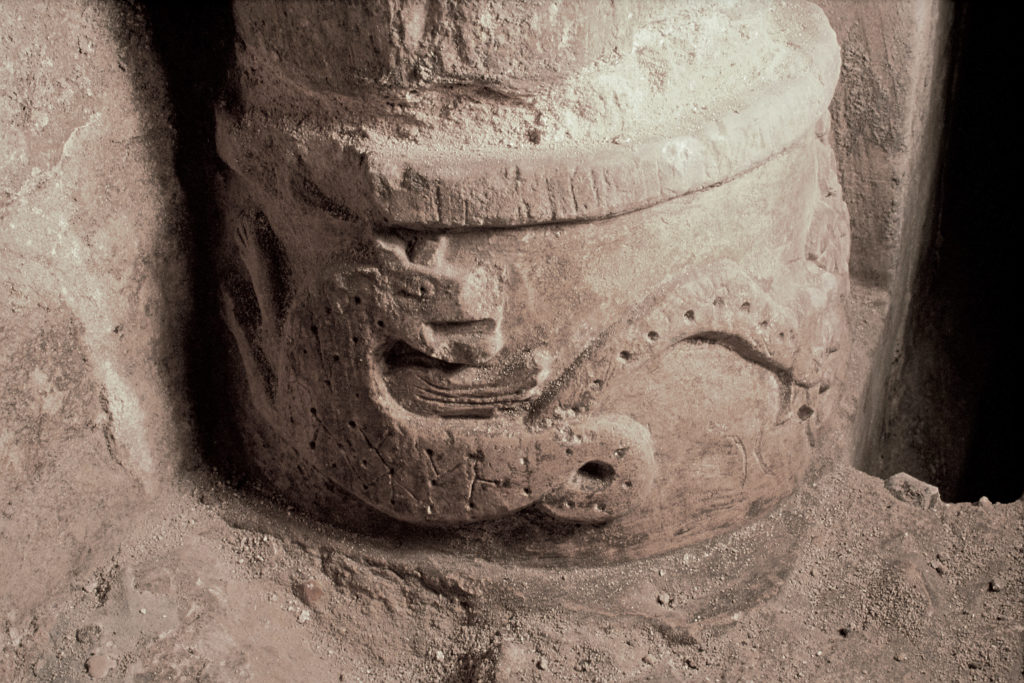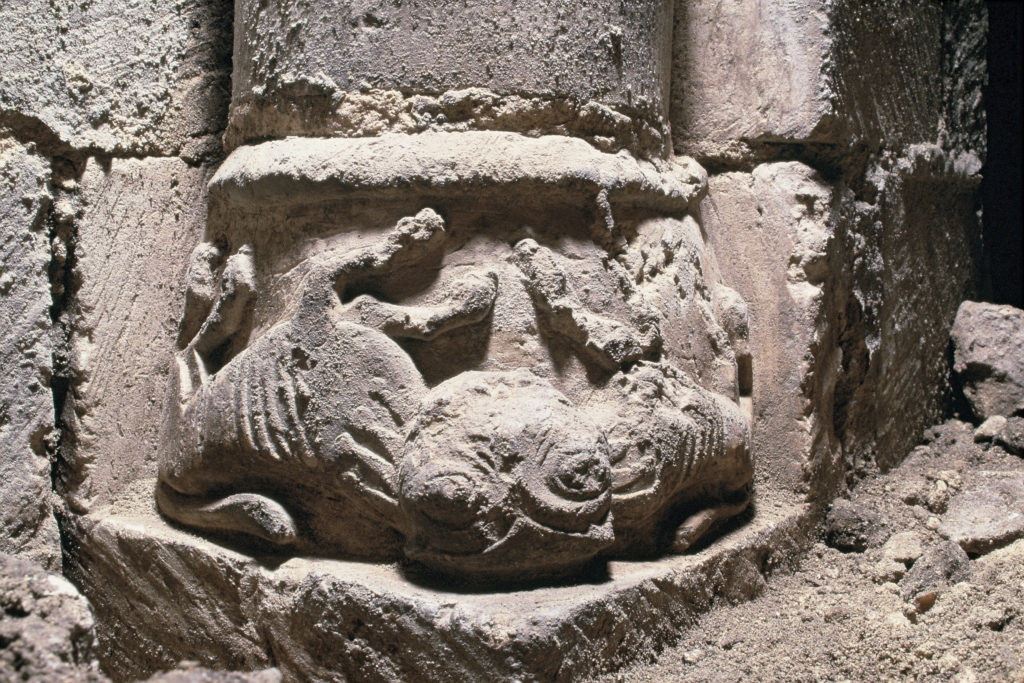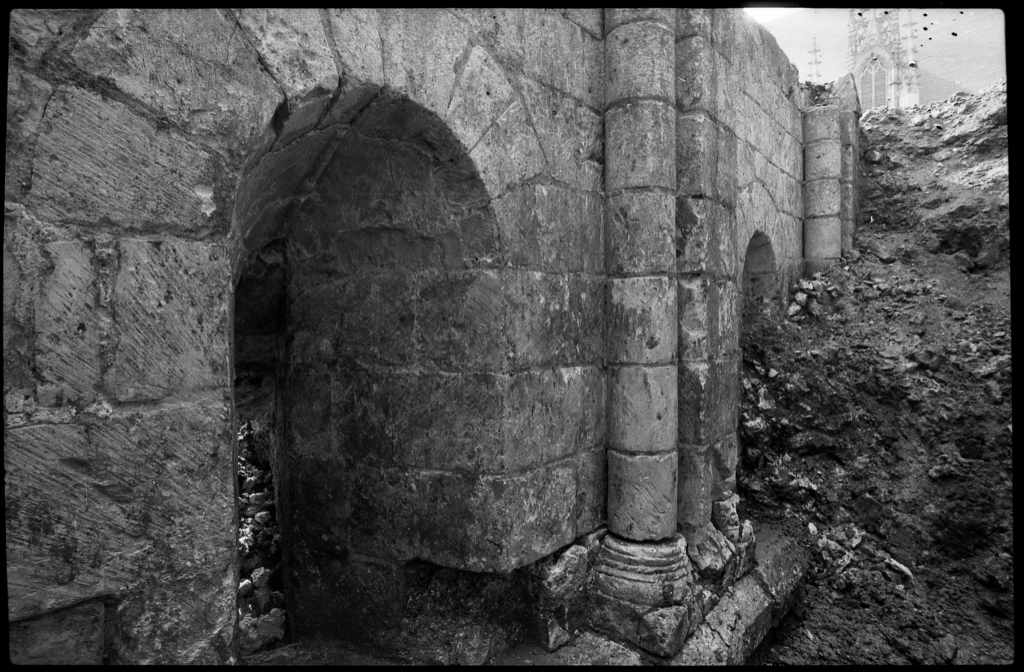The oldest Jewish Monument in France
The monument discovered in 1976 is a Romanesque building dating from the early 12th century. Constructed entirely in limestone from the Seine Valley, this building was found around twenty metres back from the Rue aux Juifs, and was located in a courtyard or garden.
Description of the monument
The Maison Sublime is a rectangular building around 14 metres long and 9.5 metres wide. Due to the thickness of the walls, it seems likely that this building had at least 3 floors: a basement, a ground floor and a first floor. Now, just the lower room and remains of the ground floor walls are still visible.

All the walls (except the east wall) have flat buttresses surrounded by columns sitting on carved bases.
The north wall has 4 bay windows to allow light through to the lower room. At the north-west point, a corner turret contains a spiral staircase to move between the different floors of the building.
Finally the south wall, the monument’s primary facade, features the building’s two most beautiful column bases. On either side of the staircase leading to the lower room, there is a column base depicting two single-headed lion cubs and another with a two-headed dragon. Some see an illustration of a Biblical reference from Psalm 91 in these sculptures: “thou shalt tread upon the lion and adder: the young lion and the dragon shalt thou trample under feet”.


The lower room is found two metres below the level of the medieval floor. Around 3 metres tall, it was not vaulted, but simply covered with a floor. The floor was likely made of beaten earth.
The medieval floor
In an urban setting, when a monument is destroyed or collapses, it is common to spread the debris across the floor, add a layer of earth to stabilise and level out the land, then rebuild on top. This means the level of the floor gradually rises over the centuries. In the case of the Maison Sublime, the medieval floor is located 2.5 metres below the current level of the courtyard of the Palais de Justice.

Hebrew graffiti
16 examples of Hebrew graffiti were found in this lower room. Found on the north and south inner walls, as well as the corner turret, they refer to the names of people (Josué, Isaac, Jacob, Raphaël). Other graffiti indicates the hope that “God’s Torah exists forever” or reference a quote from the Book of Kings (I, 9, 8): “May this house be sublime”.
This graffiti is particularly important, as it confirms that the monument did indeed belong to Rouen’s Jewish community.
Studies of this graffiti – as well as that of the entire monument – have not determined the use of the Maison Sublime. Was it a synagogue, a rabbinical school or a private home? No one can say.
Uncertain use
It is difficult for historians to identify community buildings, largely due to their reallocation following expulsion of the Jews.
The same applies to the Maison Sublime. Archaeological discoveries confirm that the lower room of the monument was completely backfilled around 1306, the very year when Rouen’s Jews were expelled from the city and saw their property confiscated. This change could coincide with new use of the building.
The date of destruction of the Maison Sublime also raises a question. Sources are not consistent on whether destruction took place in 1429, when the market at the Place de la Cathédrale was transferred to the Clos aux Juifs, or around 1550, when the Parlement de Normandie was extended east.
But one thing is certain – the Maison Sublime is the oldest Jewish monument in France. It is also major evidence of part of the city’s history: medieval Rouen Judaism.